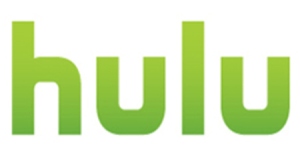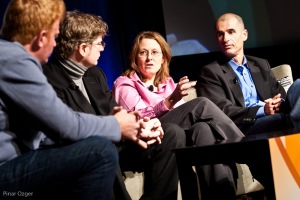As consumers of digital content, we are all overwhelmed with a myriad of subscription and a la carte procurement options for accessing the movies and TV we want. Unfortunately, no one has the complete solution just yet. Hulu gives us a lot (not all) of the content from Fox, NBC, and ABC but generally lacks support of the cable operators and CBS due to unresolved conflicts with their respective business models. TiVo and other connected TV devices are reaching many agreements with content consolidators such as Hulu and Netflix, but no one has a fully integrated experience where content comes before the content provider’s brand, creating friction in the user experience.
What’s it going to take to get to the Utopia vision of watching whatever you want, wherever you want, without navigating multiple content silos or maintaining an excessive number of subscription services? Here are a few of the primary industry issues outstanding:
Effective revenue model for all parties involved
Content owners need to be fairly paid, which hasn’t happened yet. Netflix’s growth is amazing, as they have captured 60% of the movie streaming market; however, they have windowing rules that keeps desired content out of the hands of consumers too long. Without a dual subscription and ad model, they will likely struggle to establish a model that attracts desirable content and keeps everyone fairly paid.
Hulu’s ad effectiveness with respect to brand and message recall is 55% more effective than traditional advertising. This is translating to higher revenue returns for Hulu per half hour of prime time episode as compared with cable, cable DVR, and broadcast DVR; only broadcast is earning revenue higher per half hour of prime time episode today and the gap is closing quickly. For Hulu, breaking from its JV relationship with its founders is the critical next step to expansion.
It will be interesting to see what packaging and merchandising options develop with the union of Blockbuster and Dish, given the opportunity to marry strong content provider relationships with multi-channel distribution capabilities.
Maintain brand identity, but let go of brand dominance
Making users go to dozens of websites and apps will not work. Content silos must be broken down. TiVo is currently one of the best devices to make this happen as it owns the coveted “input 1” position on our TVs, meaning even our grandparents can easily get to the stuff they want to watch. TiVo’s latest product makes huge strides towards putting the content in front of users before the distributor’s brand and makes great strides at breaking down the windowing issue faced by Netflix by giving users multiple content access points. While TiVo has had many great successes, it is still a heavily considered purchase in comparison to its cable operator owned generic DVR counterparts. Recent partnerships between TiVo and operators indicates that this issue may resolve over time, as its patents and its phenomenally superior user experience are showing signs of winning out.
Emergence of open standards?
From payment systems to ad platforms, the industry may have to adopt open standards to allow everyone to play. The benefit? Ease of use for users and access to content will result in more use. Proprietary business models are great if you can make it work, however, network effects are somewhat questionable, which means being the keeper of all technology components may not be the right strategic move because movie and TV viewing has not proven to be particularly social, at least yet. We don’t care much about how many people are accessing content through the same distribution channel. We simply want the content. The fewer bills, logins, and time spent finding things, the more likely usage will increase for each player.
Blog Sources
Facts stated in this blog were gathered during executive discussions in John Schneider’s Management 162 Business Capstone course at Santa Clara University during the Winter and Spring 2011 school terms. Guests include Margret Schmidt, Vice President of User Experience at TiVo, Tom Fuelling, CFO of Hulu Networks, and Peter Moore, President of Electronic Arts. The point of view expressed in this blog is solely by John Schneider.
Read Full Post »
 The central topic of the night was IT Consumerization at Churchill Club’s CIO Agenda 2013. Attendees of the talk included Karen Austin (CIO PG&E), Ben Fried (CIO Google), Bask Iyer (CIO Juniper), and Karenann Terrell (CIO Wal-mart). It seemed these CIOs had well embraced the notion that consumer technologies will drive IT strategy moving forward – something that has been well known since employees practiced BYOD when the iPhone penetrated businesses 5 years ago. The mantra now seems to be that CIOs want standards around routine, mundane tasks, as they concede that consumer choice will bring an ever increasing rate of rogue apps into the work environment. Cyber security was cited as the number one issue on the CIO’s mind. Interestingly Google’s CIO seemed to advocate for the strictest policies against rogue employees using whatever Apps and devices they want; this is the one company I expected to offer a near free for all due to its young and reputably innovative employee base. I appreciated his perspective that IT must make its “employees great” in order to avoid the proliferation of foreign apps in the workplace, but I remain a skeptic that an IT department can keep pace with marketplace innovation. It was a commonly shared view at the talk that IT must delight its customers.
The central topic of the night was IT Consumerization at Churchill Club’s CIO Agenda 2013. Attendees of the talk included Karen Austin (CIO PG&E), Ben Fried (CIO Google), Bask Iyer (CIO Juniper), and Karenann Terrell (CIO Wal-mart). It seemed these CIOs had well embraced the notion that consumer technologies will drive IT strategy moving forward – something that has been well known since employees practiced BYOD when the iPhone penetrated businesses 5 years ago. The mantra now seems to be that CIOs want standards around routine, mundane tasks, as they concede that consumer choice will bring an ever increasing rate of rogue apps into the work environment. Cyber security was cited as the number one issue on the CIO’s mind. Interestingly Google’s CIO seemed to advocate for the strictest policies against rogue employees using whatever Apps and devices they want; this is the one company I expected to offer a near free for all due to its young and reputably innovative employee base. I appreciated his perspective that IT must make its “employees great” in order to avoid the proliferation of foreign apps in the workplace, but I remain a skeptic that an IT department can keep pace with marketplace innovation. It was a commonly shared view at the talk that IT must delight its customers.








